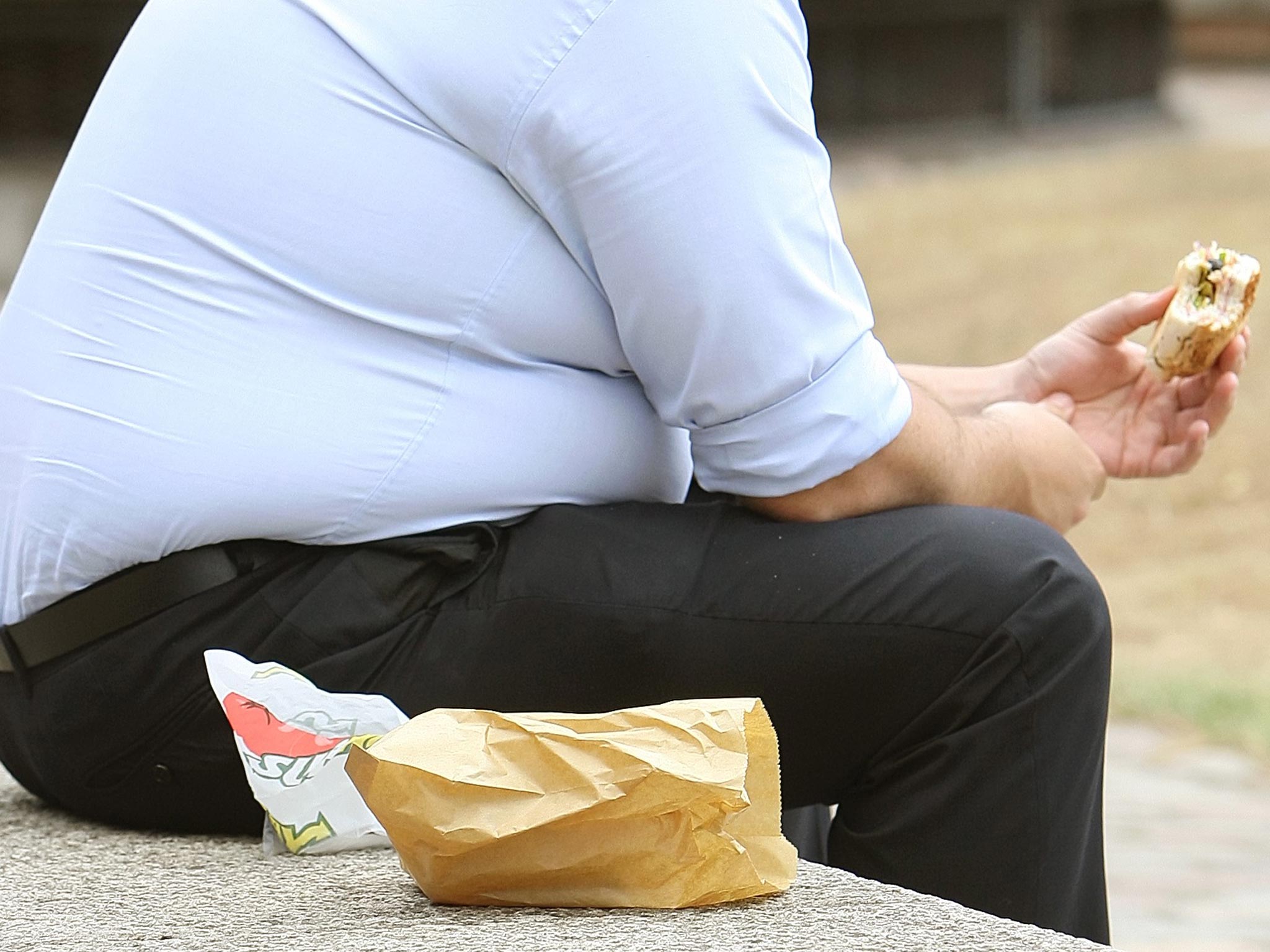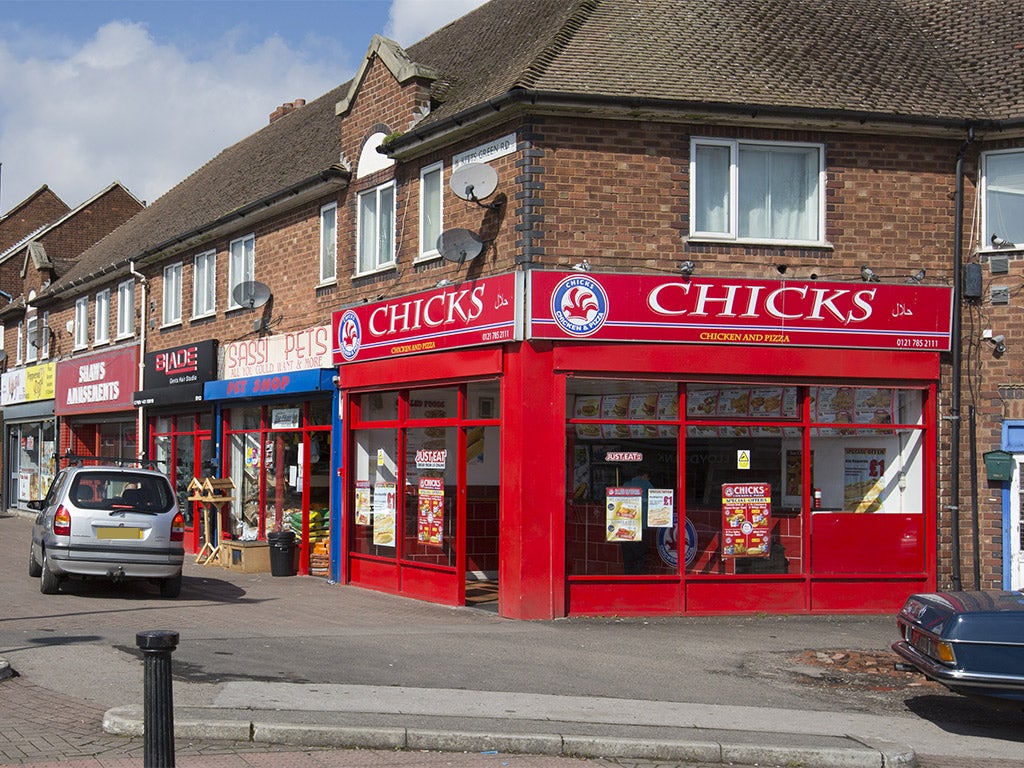Fast food Britain: The number of takeaways soars across the nation's high streets
New research has found that most of them opened in the poorest parts of the country, with fears that the UK could end up with American-style 'food deserts'

The number of unhealthy fast food takeaways on the nation’s high streets has soared over the past two decades, with most opening in the poorest parts of the country, according to new research.
Local councils across the UK should consider placing restrictions on the opening of new takeaways in deprived areas, the study suggested, amid fears that easy access to fast food is contributing to high obesity rates among the country’s poorest people.
If action is not taken, it is feared that the UK could end up with American-style “food deserts” – deprived areas where access to affordable, quality, and nutritious food is severely limited. US First Lady Michelle Obama has fought a long-running campaign to eradicate them, with only limited success.
The new study, published today by academics at the University of Cambridge, found that the number of takeaway restaurants has risen by 45 per cent in the last 18 years, from 2.6 outlets per 10,000 people to 3.8. Areas of the highest deprivation saw a 43 per cent rise in the total number of takeaways, compared to just 30 per cent in the least deprived.
The study focused on the county of Norfolk, which in 2001 had a resident population of almost 800,000 people. As the area shares many characteristics with the rest of the country, researchers said the results could be extrapolated to apply to the UK as a whole.

Yellow Pages telephone directories were used to collect data on the number and location of takeaway outlets across six time points between 1990 and 2008. These were then mapped onto electoral ward boundaries so their density could be compared against local levels of socioeconomic deprivation.
“Despite net growth in the overall number of takeaway food outlets across the study area, growth in the number of takeaway food outlets in the most deprived areas was especially strong,” said the researchers, writing in the academic journal Health & Place.
Fried chicken shops, fish and chip shops, pizza and kebab shops were all included in the survey, as were Indian and Chinese takeaways. Cafes, restaurants, pubs and shops were discounted.
Dr Pablo Monsivais, of Cambridge’s Centre for Diet and Activity Research (CEDAR), said: “The growing concentration of takeaway outlets in poorer areas might be reinforcing inequalities in diet and obesity, with unhealthy neighbourhoods making it more difficult to make healthy food choices.
“Our findings suggest that it might be time for local authorities to think hard about restrictions on the number and location of outlets in a given area, particularly deprived areas.”

Some areas have already adopted such policies. In 2012, Birmingham City Council declared that only one in 10 premises in any shopping area should be a takeaway and began limiting the number of new openings, while the Greater London Authority has also suggested limiting the percentage of takeaways on the capital’s high streets.
A spokesman for the National Obesity Forum said that fast food takeaways would “continue to proliferate” until councils were empowered to stand up to big chain franchises, which he said sometimes threatened them with legal action if they threw out planning applications.
Calling on the next Government to take action, he added: “The Local Government Association wants legislation to help councils signposted in the first Queen’s Speech of the new administration – it is high time that such a law was on the statute book.”
Under the Coalition Government’s Public Health Responsibility Deal, a voluntary scheme launched in 2011, takeaways are encouraged to post the calorie content of their meals on menus. Around 70 per cent now do so.
The Department of Health declined to comment on the study’s findings in the run-up to the general election.
Case study: Birmingham
According to figures published last year, there is one fast-food outlet for every 1,097 people in Birmingham.
In Lea Village, a suburb in the east of the city, 22 per cent of the shops are takeaways – including one spot where there are eight within the space of 100 yards.
Statistics such as these prompted the city council to take action in 2012, when it announced a crackdown on the proliferation of unhealthy food on the high street.
Now, only one in 10 premises in any shopping area is allowed to be a takeaway.
Obesity in Birmingham has long been a problem. Around 64 per cent of residents are overweight, obese or morbidly obese, putting it above the national average.
Last year, the council’s former health spokesman described the problem as “a public health emergency”.
The latest figures suggest that the policy is effective, with more than half of applications for new fast- food takeaways being turned down.
But it has not proved universally popular. Some councillors have suggested that the strict limit is too inflexible, arguing that it is “better to have a takeaway than an empty shop”.
Join our commenting forum
Join thought-provoking conversations, follow other Independent readers and see their replies
Comments